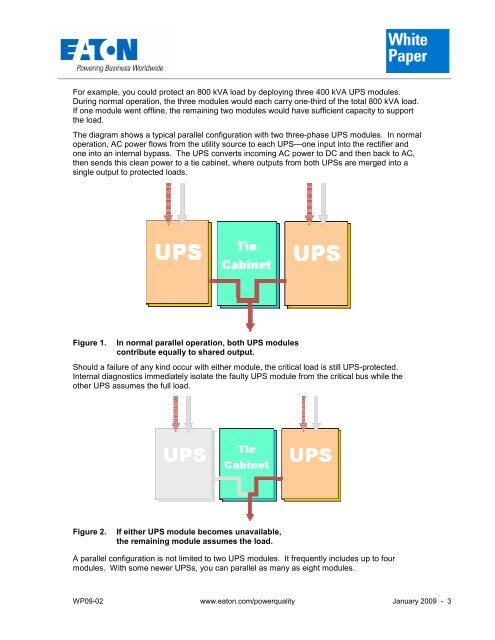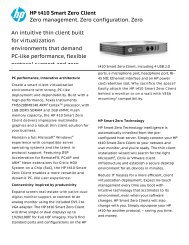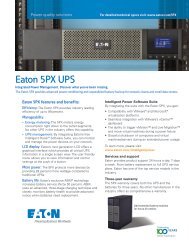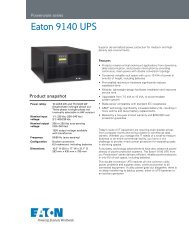Parallel UPS configurations - Eaton Corporation
Parallel UPS configurations - Eaton Corporation
Parallel UPS configurations - Eaton Corporation
You also want an ePaper? Increase the reach of your titles
YUMPU automatically turns print PDFs into web optimized ePapers that Google loves.
For example, you could protect an 800 kVA load by deploying three 400 kVA <strong>UPS</strong> modules.During normal operation, the three modules would each carry one-third of the total 800 kVA load.If one module went offline, the remaining two modules would have sufficient capacity to supportthe load.The diagram shows a typical parallel configuration with two three-phase <strong>UPS</strong> modules. In normaloperation, AC power flows from the utility source to each <strong>UPS</strong>—one input into the rectifier andone into an internal bypass. The <strong>UPS</strong> converts incoming AC power to DC and then back to AC,then sends this clean power to a tie cabinet, where outputs from both <strong>UPS</strong>s are merged into asingle output to protected loads.Figure 1.In normal parallel operation, both <strong>UPS</strong> modulescontribute equally to shared output.Should a failure of any kind occur with either module, the critical load is still <strong>UPS</strong>-protected.Internal diagnostics immediately isolate the faulty <strong>UPS</strong> module from the critical bus while theother <strong>UPS</strong> assumes the full load.Figure 2.If either <strong>UPS</strong> module becomes unavailable,the remaining module assumes the load.A parallel configuration is not limited to two <strong>UPS</strong> modules. It frequently includes up to fourmodules. With some newer <strong>UPS</strong>s, you can parallel as many as eight modules.WP09-02 www.eaton.com/powerquality January 2009 - 3
















